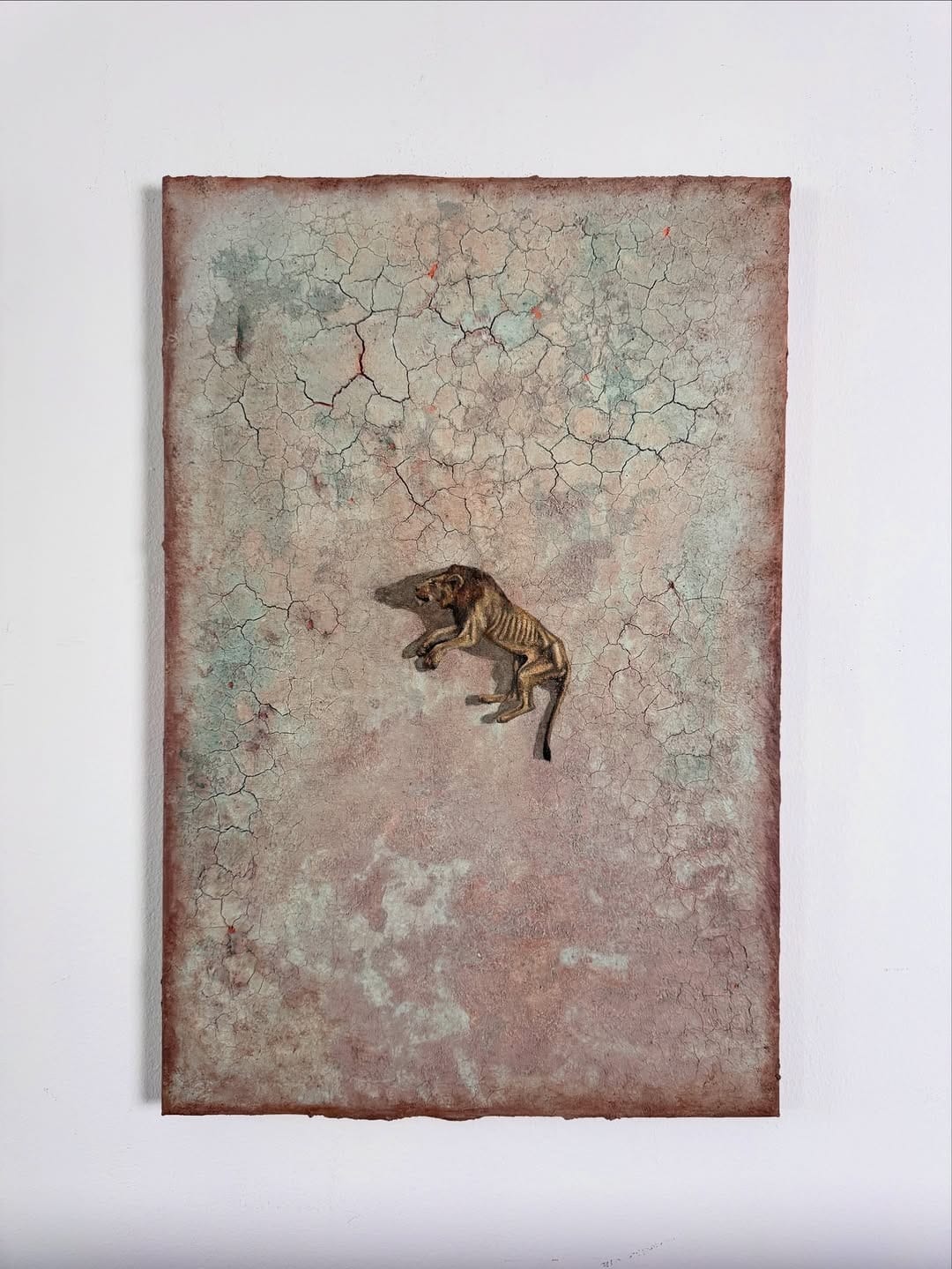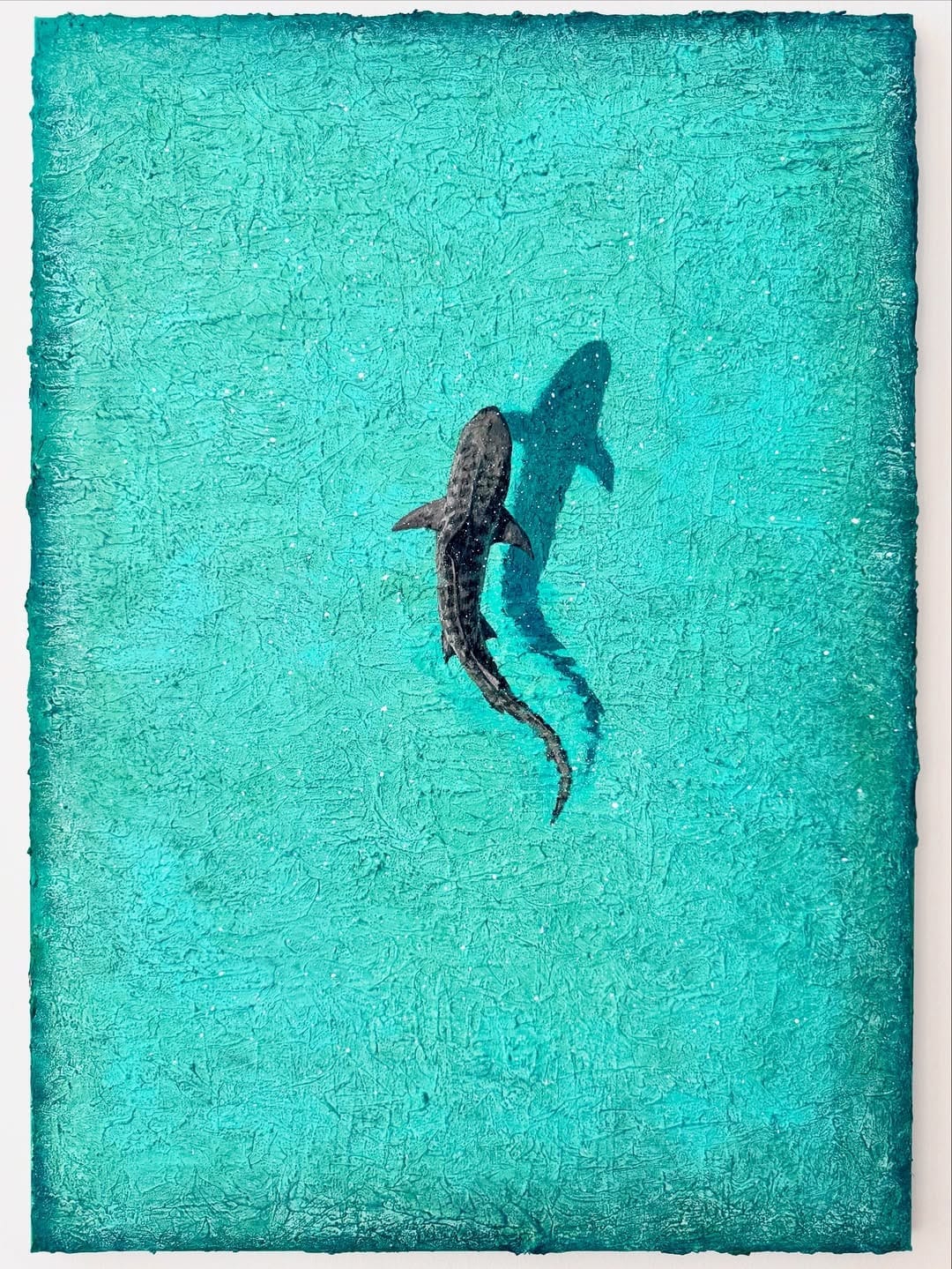Lukas Liebe's painting series Traces of Existence uses his signature "Textured Realism" technique to evoke a powerful sense of loss and vulnerability in the face of environmental crisis. These paintings feature endangered animals—a dying lion, a solitary polar bear, a skittish shark, and a lost penguin. They are all on fractured backgrounds that represent their degraded habitats. Here, Liebe's work serves as powerful reminders of the urgent need to protect wildlife on land and below water. His minimalist backgrounds bring out the emotional weight of his animal subjects, effectively distilling the complex challenges of climate change and biodiversity loss, prompting viewers to contemplate their role in preserving the planet. This is why Lukas Liebe's Traces of Existence is aligned with the United Nations Sustainable Development Goals of Life on Land and Life Below Water.

Liebe describes his technique, Textured Realism, as “quiet and reduced on the surface, but full of depth and detail underneath.” He begins each piece by first developing its backgrounds, building it up with paste, glaze, and translucent pigments that can either smoothly exist on top of one another or crack to reveal layers underneath. It is a slow and intuitive process that sees him crafting a whole landscape layer-by-layer, echoing the way soil horizons—layers of different materials that make up the Earth’s crust—are formed.

At a certain point, Liebe adds a single subject, a single animal, onto the vista, breaking the stillness of the landscape. As he continues to build up the landscape, he seals the subject onto the canvas, making it seem like a part of a 3-dimensional space rather than a 2D surface. This act asserts that the depicted animals belong to these habitats, a sacred natural occurrence that must be revered and held in high regard, in the same way that humanity regards works of art.

The poetic resonance of Traces of Existence rests in the way that Liebe's technique creates fractures across the animals’ habitat, reflecting the real-life phenomenon of habitat fragmentation. Habitat fragmentation occurs when human development slowly encroaches upon animal habitats, reducing them in size or even splitting them up into multiple different parts when they used to be one grand expanse. As habitat loss leads the cause of global biodiversity loss, Traces of Existence is a force to be reckoned with.
Lukas Liebe’s Traces of Existence does more than depict endangered species—it immortalizes their fragile majesty in a world cracking under human pressure. Through his layered 'Textured Realism,' where fractured backgrounds echo shattered ecosystems, Liebe doesn’t just show his audiences what they are losing; he makes them feel it. Each brushstroke is a quiet plea, each textured horizon a visual representation of vanishing habitats. This series is an elegy and a warning, written in pigment and cracks, urging humanity to see themselves not as observers of nature’s decline, but as potential guardians of what remains.
Find out more about Traces of Existence by Lukas Liebe and his other initiatives by checking his Instagram @lukasleibeart or website www.lukasleibe.com.
